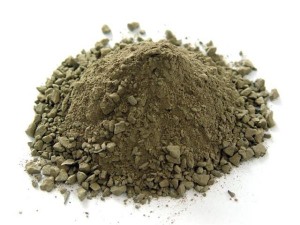Differences between rammer and castable
Ramming materials and castables are both refractory materials, but there are differences between the two:
1. Differences in raw material composition: The ramming material is mainly composed of aggregates and powders with a certain particle gradation and a binder, and the additive is mainly made of unshaped refractory materials that are constructed by manual or mechanical ramming. The ramming material includes corundum ramming. Ramming material, high alumina ramming material, silicon carbide ramming material, carbon ramming material, siliceous ramming material, magnesium ramming material, etc. For example, the ramming material for the bottom of electric furnace is made of silicon carbide, graphite, and electric calcined anthracite. It is a bulk material made of raw materials, mixed with a variety of ultra-fine powder additives, and fused cement or composite resin as a binder. It is used to fill the gap between the furnace body cooling equipment and the masonry or the filler for the leveling layer of the masonry.
Castable is a granular and powdery material made of refractory material with a certain amount of binder. It has high fluidity and is suitable for unshaped refractory materials formed by pouring. The three main components of the castable are the main components, There are three kinds of external components and impurities, which are divided into: aggregate, powder and binder. The raw materials of aggregate are silica, diabase, andesite and waxstone.
2. Differences in the scope of application of the construction: The ramming material manufacturer advocates that the ramming material must pay attention to uniform force and smooth construction during the ramming construction. The ramming material is generally used for kilns where refractory brick masonry is not available or difficult to masonry. The construction of the ramming material is relatively simple, and it is used to fill the gap between the furnace body cooling equipment and the masonry or the filler for the leveling layer of the masonry.
The castables are mainly used to construct the lining of various heating furnaces and other integral structures. Some excellent types can also be used in smelting furnaces. For example, aluminate cement refractory castables can be widely used in various heating furnaces and other slag-free and acid-free castables. In thermal equipment subject to alkali corrosion. In the parts that are corroded by molten iron, molten steel and slag and have a higher working temperature, such as tapping grooves, ladles and blast furnace shafts, tapping grooves, etc., low-calcium and Pure high alumina cement-bound refractory castables made of high-quality granular and powdered materials with high alumina content and excellent sintering.
Another example is phosphate refractory castables, which can be widely used in heating furnaces and soaking furnaces for heating metals, as well as in coke ovens and cement kilns that are in direct contact with materials. Some parts of the furnace and other containers are also repaired with high-quality phosphate refractory castables. In summary, the castables can be used for the casting and molding of key parts of the furnace body, such as the furnace door frame, adjacent to the feeding port; molten metal pouring runner , It is generally formed by casting with castables. After a period of use, the castables will fall off and need to be repaired regularly.

Related News
- Introduction of construction method of ramming material in intermediate frequency furnace
- How to choose the material of furnace lining
- The difference between rammer and castable
- Application direction of intermediate frequency furnace refining
- Introduction to the construction method of dry ramming material
- Do you know the production process and control points of breathable bricks?
- The application of argon blowing technology at the bottom of the intermediate frequency furnace
- Method for prolonging service life of intermediate frequency furnace lining
- In addition to diffused breathable bricks, there are those types of breathable bricks
- What are the advantages of coil cement
- Introduction to the construction method of ramming material
- How to choose the type of intermediate frequency furnace ramming material?
- Classification of intermediate frequency furnace charges
- What are the types of intermediate frequency furnace lining materials?
- What is the effect of the ingredients of the intermediate frequency furnace lining material on the application?
- What are the aspects of reducing energy consumption of breathable bricks?
- What are the requirements for manufacturing materials of breathable bricks?
- What are the material requirements for the production process of breathable bricks?
- What material is used for the lining of the intermediate frequency furnace? What are the common types?
- How to choose the type of intermediate frequency furnace ramming material?


